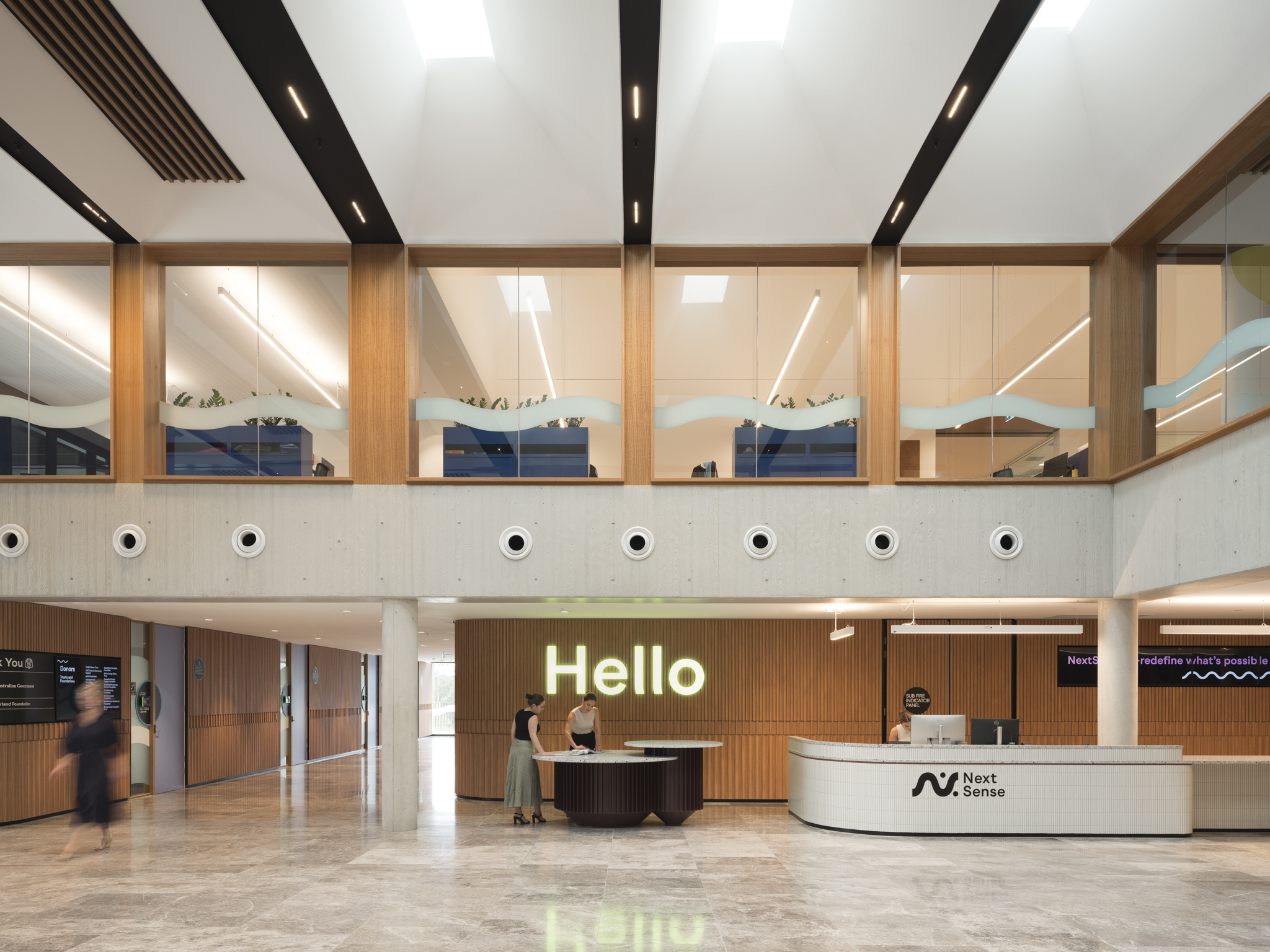As architects and interior designers, we’re not experts in sensory disability, but we understand how design shapes experiences. WMK’s design of NextSense centre for innovation at Macquarie University has shown the powerful impact sensory-aware design can have on education, wellbeing, and inclusion.
This centre brings together clinical services, education, research, and innovation for people with hearing and vision loss. But more than that, it demonstrates how thoughtful, sensory-first design can improve outcomes for everyone, not just those with sensory disabilities.


In education, design has long focused on function and aesthetics. But when we also design for how spaces feel, sound, and move, we create environments that reduce anxiety, support focus, and invite exploration. At NextSense, corridors are designed to be wide enough for people to sign to each other comfortably. Lighting is shadow-free for better lip reading and visual clarity. Acoustic design ensures classrooms are free from reverberation. There are active and passive sensory rooms, textured walls and surfaces that support wayfinding, and outdoor play areas designed for sound, touch, movement, and calm.



These aren’t niche features—they’re examples of what inclusive, future-focused schools could look like. From rounded-edge furniture to tactile signage, from calm zones to light tunnels, the design supports emotional regulation, sensory engagement, and accessibility in equal measure.

The idea of a “living model” as demonstrated by NextSense offers schools a way to evolve spaces alongside the needs of their students. It’s not about a fixed solution, but about embedding adaptability, dignity, and inclusivity into the built environment.
By 2060, millions of Australians will live with hearing or vision loss. These numbers remind us that sensory-aware design is not just an act of accommodation but an investment in learning environments where every child feels they belong.
Schools have an opportunity to lead in this space. With the right design thinking, they can become places that don’t just teach but also listen, feel, and connect.


